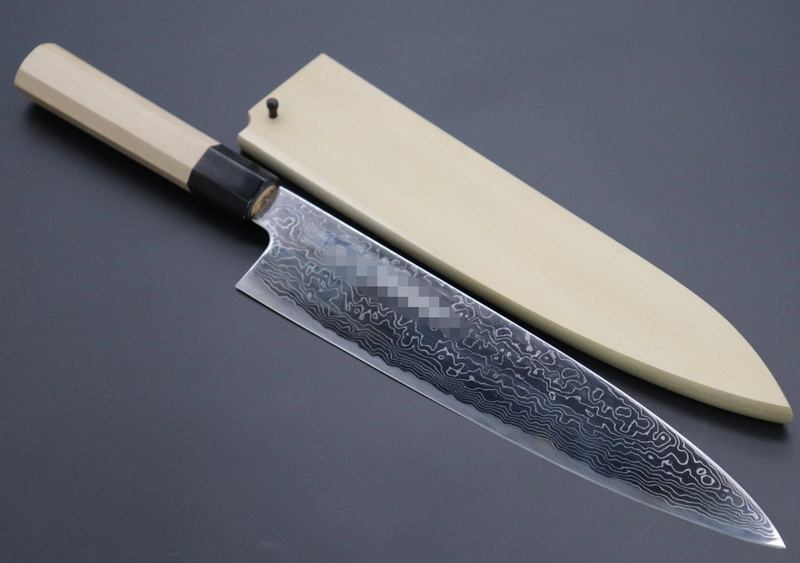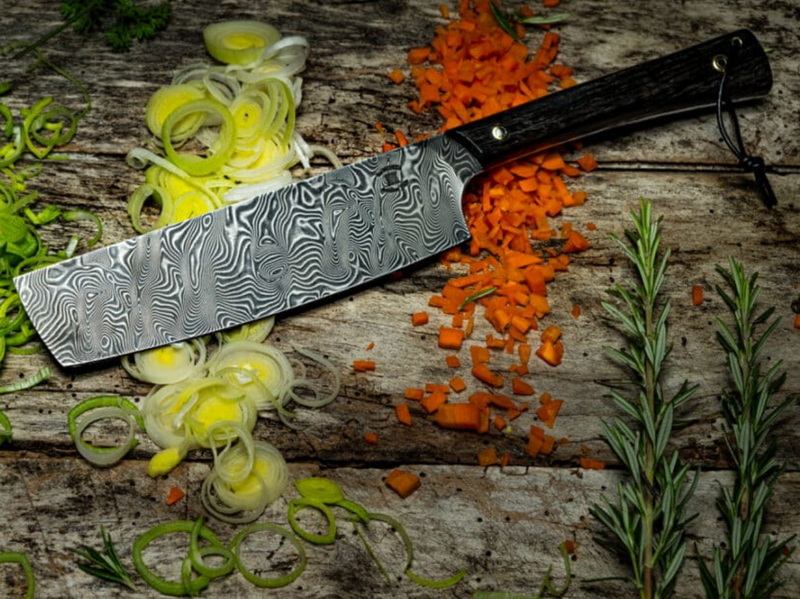- All
- Product Name
- Product Keyword
- Product Model
- Product Summary
- Product Description
- Multi Field Search
Views: 222 Author: Ann Publish Time: 2025-10-17 Origin: Site











Content Menu
● 1. Myth: Damascus Steel Is a Single Type of Steel
● 2. Myth: Damascus Knives Are Indestructible
● 3. Myth: All Damascus Knives Are Handmade by Ancient Techniques
● 4. Myth: The Pattern Is Just Decorative
● 5. Myth: Damascus Knives Always Have Superior Sharpness
● 6. Myth: Damascus Steel Comes Only From Damascus, Syria
● 7. Myth: Damascus Knives Are Expensive Only Because of the Steel
● 8. Myth: You Can Identify Real Damascus by Pattern Alone
● 9. Myth: Damascus Knives Never Need Sharpening
● 10. Myth: Damascus Knives Are Only for Collectors or Showpieces
● How Damascus Knives Are Made
>> Modern Damascus Manufacture
● Frequently Asked Questions (FAQs)
>> Q1: What is the difference between Damascus steel and pattern-welded steel?
>> Q2: How can I care for a Damascus knife?
>> Q3: Are Damascus knives suitable for professional chefs?
>> Q4: Can a Damascus knife be used on a cutting board?
>> Q5: Is every knife with a wavy pattern a true Damascus knife?
Damascus knives have fascinated chefs, collectors, and enthusiasts for centuries, celebrated for their distinctive wavy patterns and reputed superior performance. However, many myths surround these blades, obscuring the truth about their heritage, craftsmanship, and capabilities. This article will explore the top 10 myths about Damascus knives, debunking common misconceptions and shedding light on what truly makes a Damascus knife special.

Fact: "Damascus steel" historically referred to a variety of steel types, especially the legendary wootz steel from India. Modern Damascus knives typically use pattern-welded steel, where layers of different steels are forge-welded and folded to create the characteristic patterns. While the aesthetic remains, the materials and techniques often differ from ancient Damascus steel.
Fact: Though renowned for toughness, Damascus knives are not unbreakable. Their strength depends on the steels used, heat treatment, and forging quality. Like all knives, misuse or abuse can cause chipping or damage.
Fact: The true ancient Damascus steel production method was lost by the 19th century due to changes in material sources. Today's Damascus knives are made with modern techniques replicating the patterns. Some master blacksmiths still handcraft blades with multiple layers, but the original lost methods were based on unique ingots from India.
Fact: The swirling patterns reflect the layered structure, which affects blade performance. Proper layering enhances flexibility, toughness, and edge retention, making the pattern both functional and beautiful.
Fact: Sharpness depends on blade steel, grind geometry, and sharpening skill. While many Damascus knives use high-quality steels capable of excellent sharpness, the pattern itself doesn't guarantee cutting ability.
Fact: Damascus was a famous trading center, not the sole steel production location. The original "Damascus steel" (wootz) originated in India and was shipped to Damascus for sword making and trade.
Fact: Price reflects not just steel quality but craftsmanship, artwork, handle materials, and brand reputation. Complexity of forging, finishing, and aesthetic design all add to the cost.
Fact: Many knives imitate Damascus patterns with surface etching or coatings. Genuine Damascus blades reveal multiple layered steels beneath the surface; testing beyond appearance is needed for authenticity verification.
Fact: All knives dull over time and require sharpening. Damascus knives may retain edges better, but eventually, they need maintenance like any high-quality blade.

Fact: Modern Damascus knives often balance beauty with utility. Many are used daily by professional chefs and home cooks, prized for sharpness, edge retention, and balance alongside their unique aesthetics.
Understanding the manufacturing process helps clarify many myths and appreciate the craftsmanship involved.
True Damascus steel, or wootz steel, originated in India around 300 BC to 500 AD. High-carbon steel ingots were created using specific iron ores and plant materials contributing carbon. These ingots were shipped to Middle Eastern swordsmiths who forged them into legendary swords with unique patterns and exceptional cutting ability. The original recipe was lost in the 19th century due to changes in ore composition.
Today's Damascus knives generally rely on pattern welding:
- Steel Selection: Knife makers select layers of soft and hard steels with different carbon contents.
- Forge Welding & Folding: The layers are heated (around 1600°C), forge-welded, folded multiple times to increase layer count (sometimes 60+ layers), and hammered into shape.
- Heat Treatment: The knife is annealed (heated and slowly cooled) to relieve internal stresses, then hardened by quenching in oil or water (800-900°C) for edge retention. Finally, tempering reheats the blade (150-400°C) to reduce brittleness while maintaining hardness.
- Etching and Polishing: Acid etching dissolves softer layers, revealing the pattern. Polishing brings out the contrast and shine in the blade.
Japanese blacksmiths add creativity, sometimes using acid etching to enhance pattern contrast. They may hand-layer and fold steel bars repeatedly to achieve fine artisanal blades that marry function and beauty.
To preserve a Damascus knife's performance and appearance:
- Hand wash and dry immediately after use. Avoid dishwashers.
- Apply light oil to prevent rust.
- Use wood or plastic cutting boards.
- Sharpen regularly with whetstones.
- Store safely to protect the blade.
Damascus knives embody a rich fusion of history, art, and practical craftsmanship. Many common myths obscure their true nature—from their origins and materials to their performance and care. Understanding the realities of Damascus steel production, both ancient and modern, helps buyers appreciate the beauty and functionality of these special knives. Whether as professional tools or collectibles, Damascus knives remain highly valued for their unique layered patterns and excellent cutting qualities.

Traditional Damascus steel refers to ancient wootz steel with natural crystalline patterns. Pattern-welded steel layers different steels to forge decorative and functional patterns.
Hand wash and dry promptly, avoid dishwashers, oil the blade periodically, sharpen as needed, and store with care.
Yes, many chefs prefer Damascus knives for their combination of sharpness, durability, and striking aesthetics.
Yes, wooden or plastic boards are recommended to protect the edge.
No, many are surface-etched imitations. Authentic Damascus knives show layered steels beneath the surface.
The Ultimate Professional Knives for Halal Butchery in Middle Eastern Kitchens
Chef Knife Size Guide: Choosing Between 6″, 8″, 10″, And 12″
Custom Knife Handles: How To Design A Chef Knife That Fits Your Hand Perfectly
Chef Knife Surface Treatments Guide: From Polished Migaki To Damascus Patterns
Inside Our Professional Knife Sample Room: Quality You Can See
Universal Knife Block Buying Guide: Modern Acrylic & ABS Knife Holders for Professional Kitchens
Universal Knife Block: The Complete Guide To Modern, Hygienic Knife Storage
The Complete Guide To Red Handle Knife Sets: Style Meets Functionality in The Kitchen
Professional Knives for Halal Butchery And Middle Eastern Cuisine